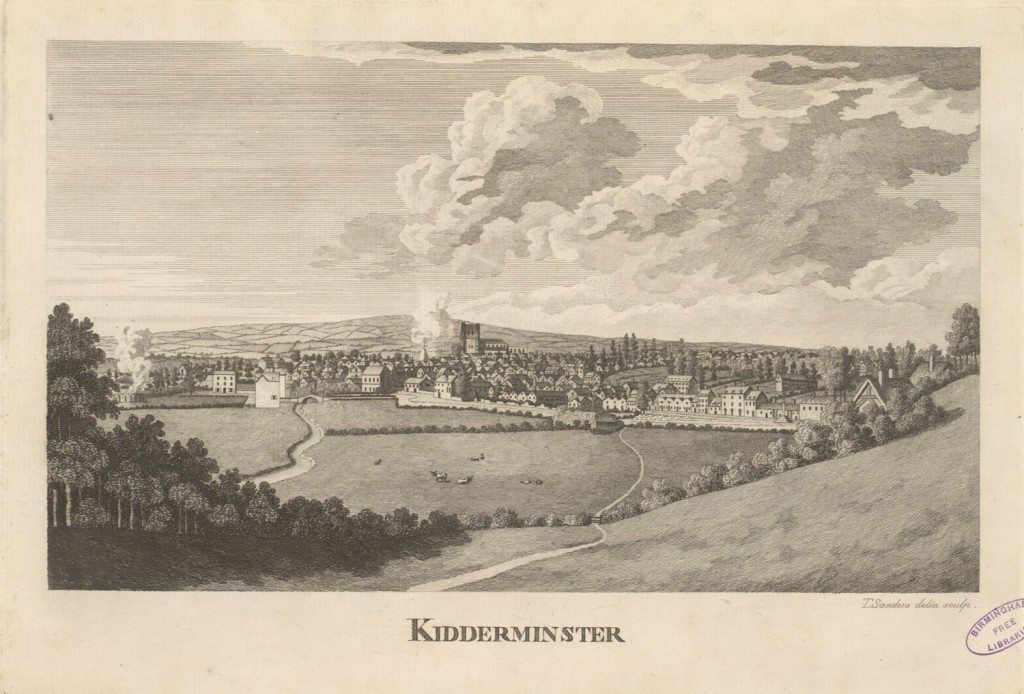The Origins of Carpet Making in Kidderminster
Image: Kidderminster (c. 1777) Thomas Sanders, Perspective Views of Market Towns within the County of Worcester (c. 1777).
Image from: Local Studies and History, Birmingham Central Library
Kidderminster had been a textile producing town since medieval times. During the reign of Henry VIII, its industry had been protected by statute, along with that of a number of other Worcestershire towns. By the seventeenth century, Kidderminster cloth was the only textile industry to survive and flourish because of the town’s ability to adapt to changing needs and tastes. Already famous for its broadcloths, the town rapidly gained a reputation for producing what was known as “Kitterminster Stuff”, which was used mainly for bed coverings and wallhangings1 .
By the early 18th century, this industry was experiencing a decline and enterprising stuff weavers started to look for a replacement product. In 1735, John Pearsall was the first person to introduce carpets, as we would recognise them, to Kidderminster2 . They were not floor carpets in the truest sense of the word but were more like wall hangings. Known as “Ingrain”, they later came to be known as “Kidderminster” and later as “Scotch”, when the process was exported to Scotland. Initially, their success was limited, due to stiff competition from Wilton carpets, thought to be superior products. Over a period of about fifty years, the production of this new type of carpet overtook the production of the more traditional worsted trade.
1 Marsh, A, The Carpet Weavers (Malthouse Press, Oxford) p.2 and Thompson M, Woven in Kidderminster (David Voyce, 2002) p.8
2 Smith, L.D. p.4
Continue browsing this section
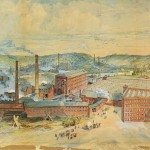 Made in Kidderminster: the History of the Carpet Industry
Made in Kidderminster: the History of the Carpet Industry
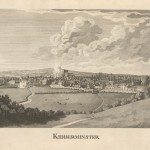 The Origins of Carpet Making in Kidderminster
The Origins of Carpet Making in Kidderminster
 The Origins of Carpet Making in Kidderminster
The Origins of Carpet Making in Kidderminster
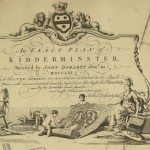 The Origins of Carpet Making in Kidderminster
The Origins of Carpet Making in Kidderminster
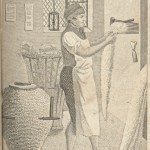 Handloom Weaving
Handloom Weaving
 The Factory System
The Factory System
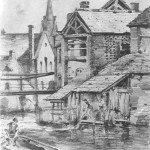 Washing and Winding
Washing and Winding
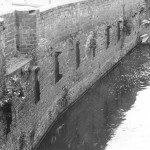 Washing and Winding
Washing and Winding
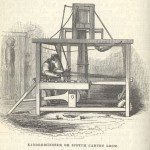 Technological Changes: the Scotch Loom
Technological Changes: the Scotch Loom
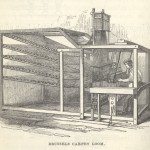 Technological Changes: the Brussels Loom
Technological Changes: the Brussels Loom
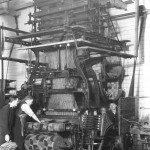 Technological Changes: the Jacquard Loom
Technological Changes: the Jacquard Loom
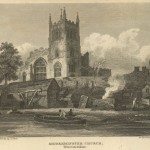 The Kidderminster Carpet Industry and the Wider World
The Kidderminster Carpet Industry and the Wider World
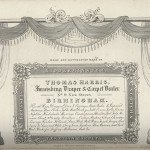 The Kidderminster Carpet Industry and the Wider World
The Kidderminster Carpet Industry and the Wider World
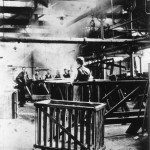 Working Conditions in Kidderminster Carpet Factories
Working Conditions in Kidderminster Carpet Factories
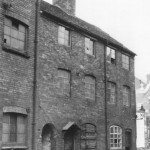 The Great Strike of 1828
The Great Strike of 1828
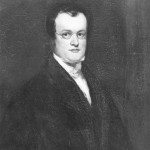 The Aftermath of the Great Strike of 1828
The Aftermath of the Great Strike of 1828
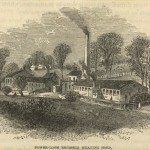 Kidderminster in the mid 19th Century
Kidderminster in the mid 19th Century
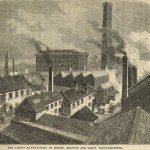 Kidderminster: the Factory Town
Kidderminster: the Factory Town



